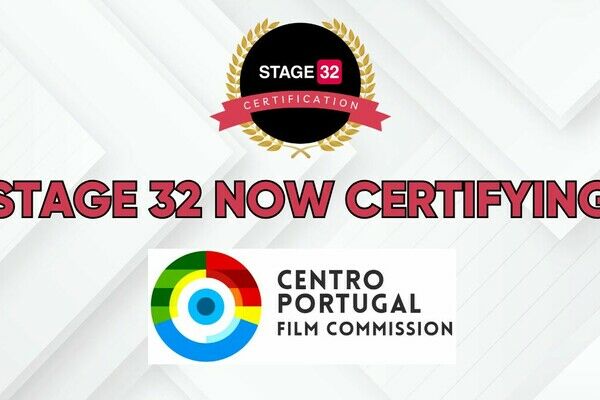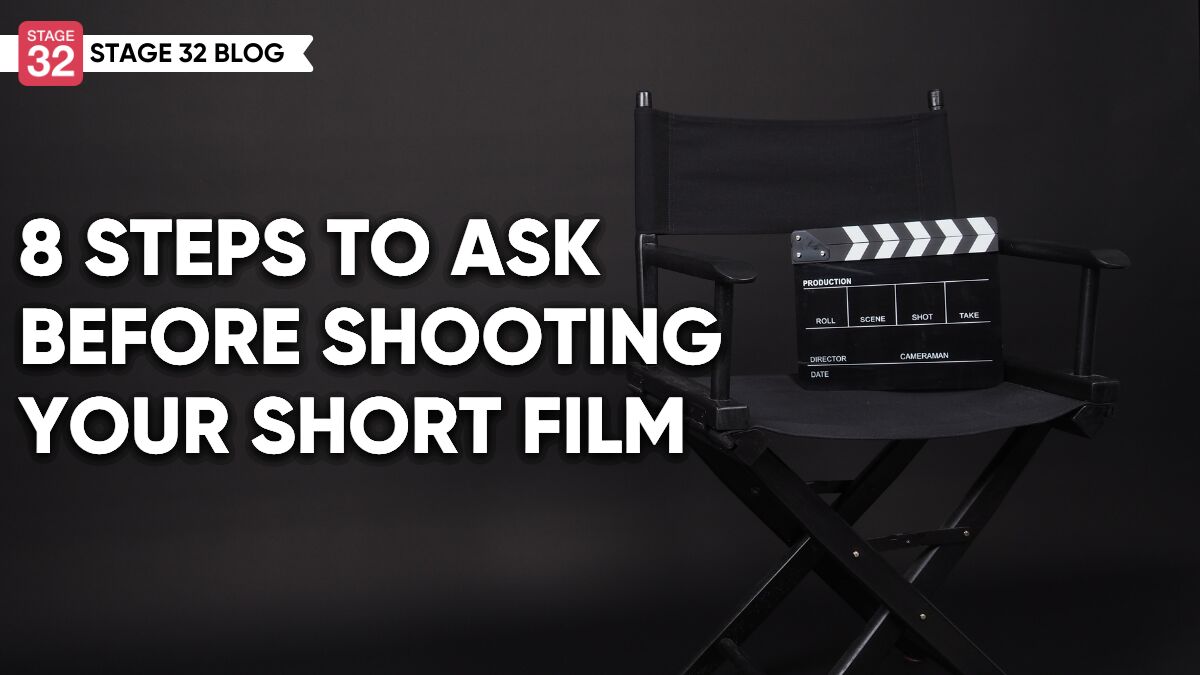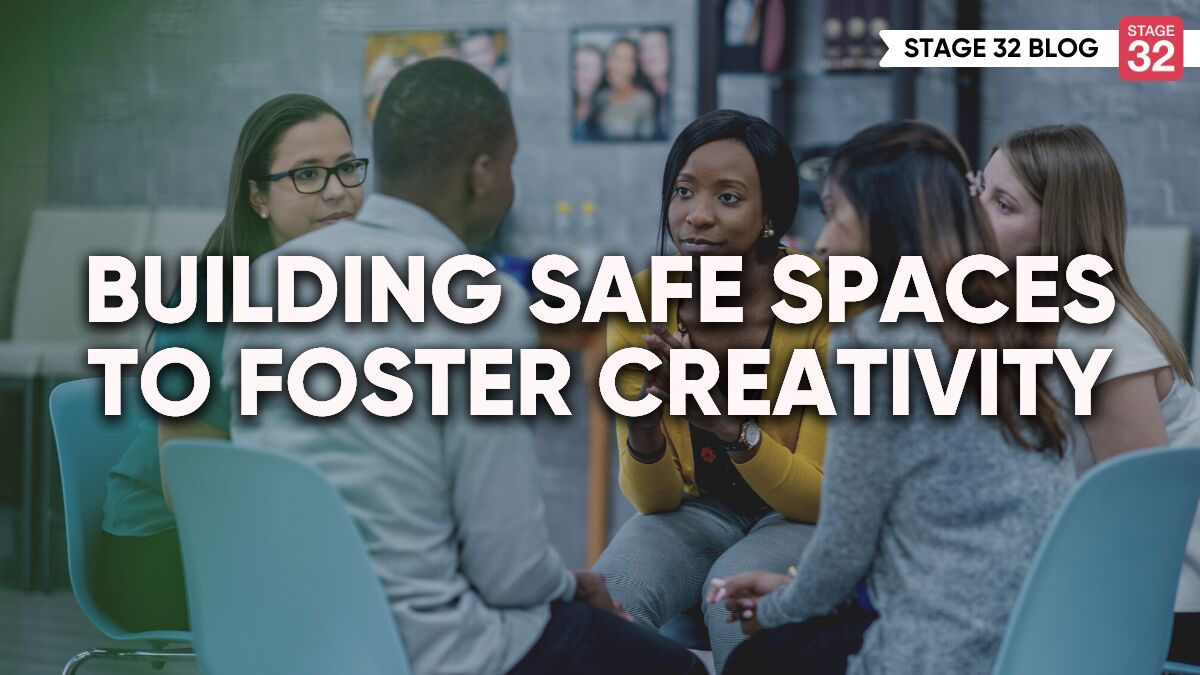Building Safe Spaces To Foster Creativity
If branding is a demonstration of what we consistently do, then the heart of my professional brand is “Builder of Safe Spaces to Foster Growth & Creativity”. Looking over my track record, I consistently create safe spaces for people to talk and grow. As a massage therapist, during film school as a casting director making auditioning more fun, as a producer making directors feel more supported, my early days in television where I helped to create an internship/mentorship program for college students. Even teaching film & television production to teenagers, as much as they disliked the decisions I made sometimes, there was a sense of ease because first there was truth, and then there was trust. To say the least, I am uniquely qualified to speak to building safe spaces for creatives!
In honor of Mental Health Awareness Month (tomorrow is May 1st), today’s blog explores ways that we can not only look out for our individual mental health but also provide healthy, nurturing, safe spaces for our fellow creatives to thrive. Be sure to check out the helpful links throughout, including some great Stage 32 Lounge Posts.

Looking After Your Own Mental Health
According to the Mental Health Foundation, there are ten essential steps to maintaining your mental health:
1. Talk About Your Feelings - This is important both in the personal and professional arenas. Have you learned how to approach discussing your feelings with your parents or partner? Why not use that same language to approach hard conversations at work? Therapy is a fantastic place to learn more about using more conscious and considerate language when talking about your feelings.
2. Keep Active - This is an industry standard, but it’s also basic science. Your brain is part of your body, and all parts of your body require regular blood flow in order to work properly. Movement is an easy way to ensure blood flow. Writers often go on walks or workouts to keep their minds equally active. A production crew has to keep up their strength in order to work on set.
3. Eat Well - Please chide those who live in LA about their extreme eating habits, but one bad day because of too much coffee, sugar, or processed food could have catastrophic consequences for the rest of the team and project.
4. Drink Sensibly - It’s true, there are a lot of opportunities for partying and drinking in the industry, but staying true to your own regular consumption can help you focus on your craft. This can even mean introducing tea or smoothies into your rotation so that you are not always having coffee during your “coffee dates”.
5. Keep in Touch with Loved Ones and Friends - This one is so important but can feel incredibly difficult. How often should I call? Is calling enough? How do I give everyone enough time? Consider that not every person requires the same amount of quality time. I just received a message from a friend after a year from our last catch-up. It was a lovely message, and not too soon! Plus, for those who are closer to you, give them an open invitation to reach out to you so that they can make an effort, too.

6. Ask for Help - Yes, yes, and YES! Do you already know who you would ask?
7. Take a Break - I feel like no one has to even suggest this one anymore after the pandemic, but it’s still worth mentioning. How do you ensure you’re taking a regular break? Are you setting alarms? Do you have lunch with a friend to help keep you accountable? It’s easy to say you want one and harder to make it happen.
8. Do Something You’re Good At - Having little daily victories can give you the boost of confidence needed to overcome the often punishing self-criticism that comes with attempting a creative project.
9. Accept Who You Are - Own your brand. What is it that you consistently do well? What do you innately bring to a potential team?
10. Care for Others - This point may seem counterintuitive, but foundationally there is a very good reason for it: empathy. Without regularly caring for someone else, our ability to feel compassion wanes. Caring for plants or animals is also a good way to flex this feel-good muscle as well. Not only does it feel good to know that you can contribute to the well-being of others, but it reminds you that you, too, deserve to be cared for.
On my recent “Victory Round” with Brooklynn Fields, we unpacked how to be present and generous with our time and energy. It starts with looking after ourselves first so that we have plenty to give. Be sure to watch the recording on my Instagram (link in my bio below).
Setting Boundaries and Reinforcing Functions
Did anyone else love doing Logic Puzzles as a kid? There was something comforting about the grid, the bullet-pointed details, and the clearly stated goal of each puzzle. At the beginning of the puzzle, you know exactly what you do and do not have and it is up to you to infer the remaining relationships. This structure may look uninviting to some, but it is incredibly fun to problem-solve knowing that your work ends when the grid is filled out. In this way, creative thinkers are no different.
It is often a misconception that people in creative roles need freedom alone. In fact, structure and clarity are often required to establish freedom. Where a blank page can be intimidating, so, too, can a boundaryless project. Whether the structure is centered, like a spine or a timeline, or it is set by limitations or constraints, like a fence or a box, creatives feel comfortable knowing where they start or stop so they can focus on playing in the space between.
This structure can manifest as a regular start time, milestones or deadlines, or even the bullet-pointed requests of a client. Anyone who has ever tried to satisfy a client’s vision will tell you that they would rather have more details than too few. And while a creative person rarely has the desire to assume responsibility for all of those tasks, they often want to know how their contribution fits in with the rest of the team. So, after establishing the structure, it’s best to clarify each person’s function within the team.
It’s hard enough figuring out one’s place in the world, we should not have to wonder what our place on our team is as well. Yes, of course, a task list is recommended! How else will your creative hive know whether or not they were successful? Much like this screenwriter asking how he can write to make a filmmaker’s life easier, knowing how one contributes to another is incredibly satisfying. If you’re in the experimentation phase, then you would at least clarify what it is you are attempting to determine, like this camera test discussed in the Cinematography Lounge. But what if your query was not open-ended?
Consider if you were in a writer’s room with three main writers, a story editor, and you are the producer to keep everyone on track. How would you divide up the three writer’s tasks? What kind of overlap would they have? Are they at liberty to help each other, or do they have to stay separate?

Now, imagine how the first day in this writer’s room would play out if you didn’t have those roles clearly defined before they showed up. The only thing more chaotic than a professional creative under a deadline is a professional creative under a deadline who has to make a decision that is outside their scope. Just because they can do the work does not mean they can self-manage while they do it. Of course, you can always ask for their insight, but relying on them to structure themselves could result in competing structures.
If you want your creative team to feel safe and supported, start with certain decisions already made. That way if there are any suggestions for changes it feels more like an adjustment than an overhaul.
Taking and Relinquishing Responsibilities
When it comes to leadership, part of the job description is taking responsibility for your choices. The tricky part of being in a community or an even smaller group of creatives is that the leader may not be clear. In this case, taking personal responsibility for your actions is paramount. You must learn to listen and respond to the best of your abilities instead of as stipulated by your team lead.
While this seemingly constant negotiation may seem daunting, it is also freeing when you realize that you assume no responsibility for anyone else’s choices. The great thing about collaboration is that people are required to meet you halfway. If they don’t? That’s on them.
Delegating responsibility may well be the final test of trust in a relationship, but it’s the first test of accountability in film production. In this way, it is a “fake it ‘til you make it” mentality, but for your safe space. How do you know that you are supported until you give others a chance to live up to their expectations? If you’ve asked your actors to do their own make-up and come prepared to look good on camera, then fully relinquish that responsibility to them. You may be surprised to learn that the risk of failure actually encourages people to do their best.
Be Part of the Solution
Every group comes together to solve a problem. Even if the only problem is feeling alone, at its core, your “safe space” is at least a source of your social wellness. From a professional standpoint, offering solutions is a great way to show you are a supportive part of the team. But what if your "tribe" can assist with your mental, emotional, or other aspects of wellness, too? Knowing what you need from them allows you to give back that which you may have in spades. If you approach a group with only needs and nothing to offer, is it really safe for others?
When you understand how your “tribe” fills your creative needs, consider how you feed into that source. If you receive energy from it, after all, you should ensure that there is still energy left for others or for the next occasion. Everyone wants to be part of the winning team and no one wants to stay on a sinking ship, so give back to stay afloat! Ultimately, if you know why you have joined or created your “safe space”, then you can be part of the effort to maintain that mission.
While we all hope to find a “safe space” as creatives, I hope you now feel empowered to take the reins as the builder of “safe spaces” as well! It just takes a little planning, clear communication, and a whole lot of love.
Let's hear your thoughts in the comments below!
Got an idea for a post? Or have you collaborated with Stage 32 members to create a project? We'd love to hear about it. Email Emily at blog@stage32.com and let's get your post published!
Please help support your fellow Stage 32ers by sharing this on social. Check out the social media buttons at the top to share on Instagram @stage32 Twitter @stage32 Facebook @stage32 and LinkedIn @stage-32
| Coffee & Content: How 'Top Gun: Maverick' Won The Oscar For Sound Design |
| 8 Questions To Ask Before Shooting Your Short Film |
Search Stage 32 Blog
There are now 4036 blog posts for you to enjoy. Search them all by tags below.
Acting, Advice, Cinematography, Coffee & Content, Composing, Contests, Distribution, Featured, Filmmaking, Financing, Inspirational, Networking, Producing, Screenwriting, Success Stories, Tips, Trending,Relevant Tags
Recommended Articles

A Practical Guide for Actors: Tips & Advice Every Performer Should Know

Making Our First No-Budget Feature: The Pure Vortex Production Chaos (Part 2)

Forbes Spotlights Stage 32 Certification!

November Write Club Week #3: How To Make A Strong First Impression When Meeting Execs, Producers, & Reps

Stage 32 Now Certifying Centro de Portugal Film Commission!

Stage 32 + DramaBox Join Forces to Launch World's First Vertical Drama Incubator

Don't Let the Momentum of November Write Club Die: How to Stay Active Into 2026 & Beyond!

November Write Club Week 4: The Art of the Pitch- What Managers & Execs Actually Want to Hear

Coffee & Content: The Genius of Weapons and How to Know When Your Script Is Ready






